CITY WALK (Day 2 - part 4)
We left the cathedral and headed across Jackson Square.
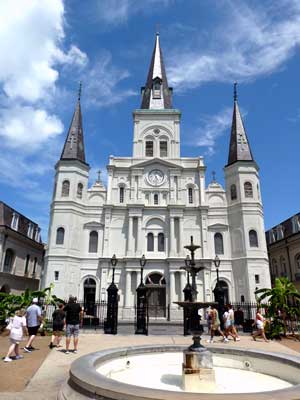



A sparrow takes a refreshing bath in the fountain.




A statue of Andrew Jackson


Tensions between Americans and the British continued to escalate over territorial expansion in North America until war broke out in 1812. The Battle of New Orleans was fought on January 8, 1815, in sugarcane fields only 5 miles from here. Ironically the battle took place 15 days AFTER the signing of the Treaty of Ghent, which formally ended the war, since news of the agreement had not yet reached the US from Europe.
Forces under the command of Major General Andrew Jackson consisted of US troops, frontiersmen, state militia, local businessmen, sailors, free black men, the Choctaw, and even the smuggler Jean Lafitte and his privateers. Despite having the advantage in numbers, training and experience, the British were defeated in just over 30 minutes due to poor strategy. The Americans suffered some 60 casualties (either killed, wounded, missing or captured), while the British suffered over 2,000, including the deaths of their commanding general and his second-in-command. Jackson became president 13 years later.



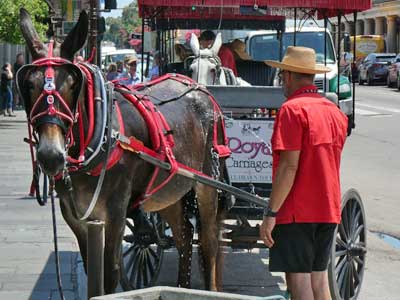
Mule-drawn carriages pulled tourists around the city. ... This mule gets a bath with a hose.


Overlooking the square ... while enjoying some entertainment

Just over the bridge and across the traintracks was the river.
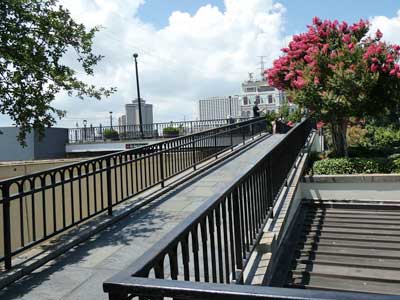


The Mississippi River is the second-longest river in North America. It flows some 2,350 miles from its source in Minnesota to where it empties into the Gulf of Mexico, making New Orleans a major port city. The river it at its deepest here, at 191 feet. Because the current is so strong, swimming here isn't possible.
The Port of New Orleans was established in 1717 when France controlled the area. Approximately 175 million tons of freight are transported along the river each year. Since the early 1900s, levees, locks and dams have been built along the water.

The first steamboat to travel the Mississippi was in 1811. Propelled by steam-driven paddle wheels, they could navigate the shallow river more quickly than barges or flatboats, allowing for the large-scale transportation of passengers and freight both down and upriver, even against strong currents.


We turned and headed up St. Anne Street towards Armstrong Park.


Should one so choose, there were plenty of tasty treats to sample.

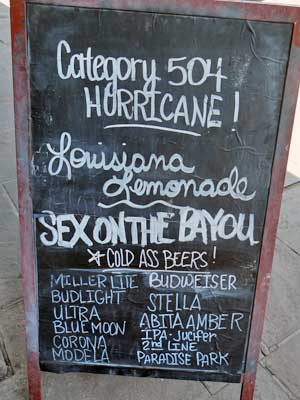

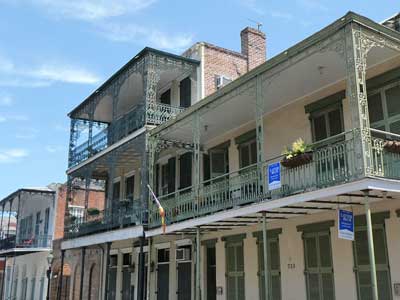



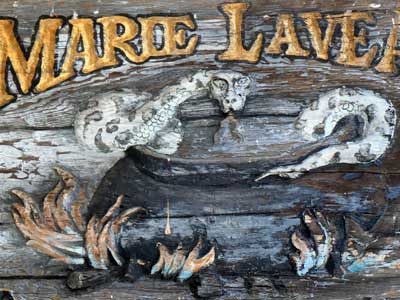
The buildings became more and more colorful.


Note all the entry high steps. Basements here are actually the ground floor of houses built on slabs. The living areas start at the second level.

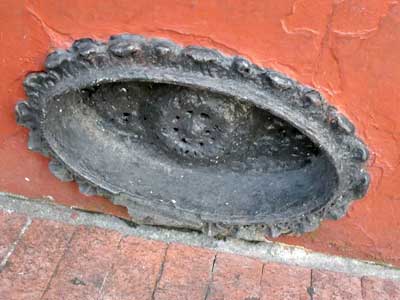
Basement "windows"

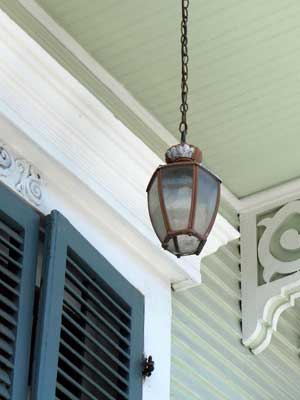
Decorative overhangs


More cast iron balconies


Toy alligators sun themselves among bead necklaces.


Louis Armstrong Park is named after the New Orleans-born Jazz legend.




Duckweeds are small plants that float on or just beneath the surface of still or slowly moving bodies of fresh water. They're often mistaken for algae. Although they are an important food source for many animals (especially surface-feeding ducks), duckweeds grow rapidly and can quickly overtake an area.


A black-crowned night heron ... and a muscovy duck
return • continue

